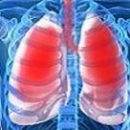What are the form of pneumothorax? What are the symptoms of pneumothorax? How is the treatment of pneumothorax? Answers to these questions you will find in the article.
Content
Forms of pneumothorax
By connection with the environment distinguish:
- Closed pneumothorax. At the same time, a small amount of gas that does not increase in the pleural cavity. No message with external environment. It is considered the easiest view of the pneumothorax, since the air can potentially solve themselves to dissolve from the pleural cavity independently, while the light grows.
-
Open pneumothorax. When the pneumothorax is open, the pleural cavity is reported to the external environment, so it creates pressure equal to atmospheric. At the same time, the lung falls out, since the most important condition for the lung fragrance is the negative pressure in the pleural cavity. Sooting light turns off from breathing, there is no gas exchange, blood is not enriched with oxygen.
-
Valve pneumothorax. This type of pneumothorax occurs in the case of the formation of a valve structure, passing the air in a one-sided direction, from a light or from the environment to a pleural cavity, and impedes it back. At the same time, with each respiratory movement, the pressure in the pleural cavity increases. This is the most dangerous view of the pneumothorax, because the irritation of the nerve of the pleura is joined to turn off the light of breathing, leading to the pleurpulmonal shock, as well as the displacement of the mediastinum organs, which disrupts their function, first of all squeezing large vessels.
In addition, pneumothorax may be:
- Closed (in the pleural cavity there is a small amount of gas / air, lightly fragrant; as a rule, it is a closed pneumothorax).
- Full (easy to sleep completely).
- Accusable (in the presence of adhesions between visceral and parietal pleutra, limiting the area of the pneumothorax; less dangerous, can proceed asymptomatic).
Double-sided complete pneumothorax in disappointing assistance leads to a rapid fatal outcome due to a critical respiratory impairment.
Symptoms
Pnemothorax
Sick pneumothorax is experiencing a sharp chest pain, breathe often I Surface, With shortness. Feel «lack of air».
Manifests the pallor or sinusiness of the skin, in particular.
Auscultative breathing on the side of damage sharply weakened,
Percussier - Boxed Sound Sound. May be determined subcutaneous
emphysema.
Treatment Pnemothorax
First aid

In suspected pneumothorax, immediately call an ambulance
help or consult a doctor. If there is an open pneumothorax,
It must be turned into an imposition of non-missing
The air of hermetic dressing («Occlusive bandage») on the open wound of the chest. For example, this can be done using an adhesive material or intact hermetic polyethylene film, and thick-gauze bandage is quite suitable.
The presence of an accurately diagnosed valve pneumothorax requires
turning it into an open pneumothorax to reduce pressure in
Pleural cavity. To do this, perform puncture of the pleural cavity
Tolstoy needle (in the 2nd intercostal on the mid-croilent line on the side
Damage, on the top edge of the edge).
Qualified help
Treatment of pneumothorax is to liquidate by suction
air from the pleural cavity and restoration in it is negative
Pressure. With a pneumothorax closed without a valid message with
easy enough puncture aspiration of gas from pleural cavity with
Supply assistance to eliminate pneumothorax in aseptic conditions
Operational. If the aspiration of the needle turns out to be ineffective, it is
testifies to air intake of the fabric light. In such cases
Perform a hermetic drainage of the pleural cavity («Drainage on Buleuu»), or create a system of active aspiration, including using electrovacuum instruments.
Open pneumothorax requires an initial translation into a closed
Pneumothorax (that is, the elimination of the message with the external environment by
hermetic injury of wounds), after which they are carried out above
Negative pressure recovery procedures in pleural cavity.









